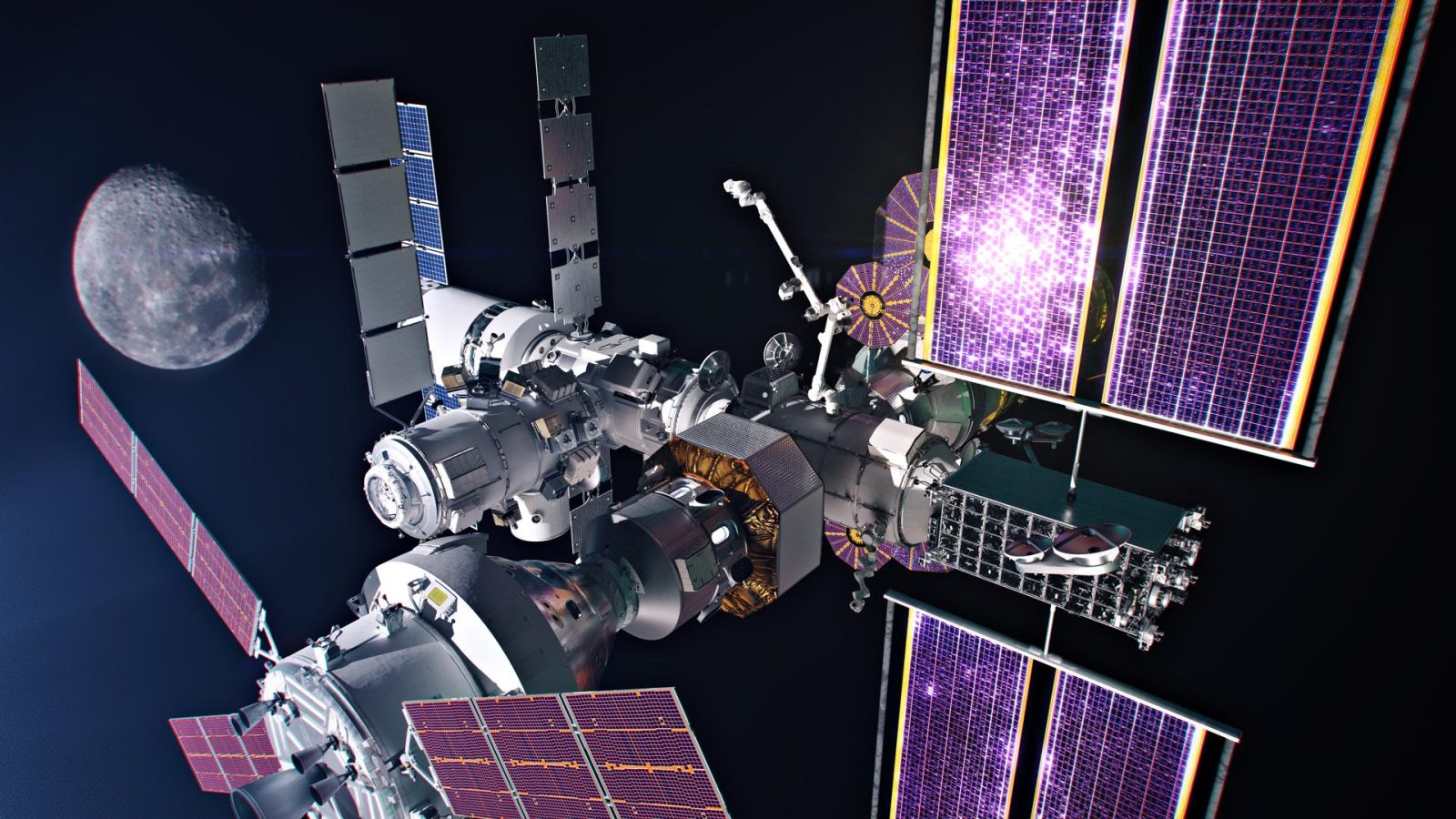
After NASA returns humans to the Moon during the Artemis 3 mission, the agency plans to begin assembling the first space station in lunar orbit. Part of the Artemis 4 mission, the goal is to deliver a critical component to the Lunar Gateway and begin enabling sustainable exploration of the Moon while serving as a stepping stone for future crewed missions to Mars.
Building on the achievements of the Artemis 3 mission’s lunar South Pole landing, slated for no earlier than late 2026, Artemis 4, planned for late 2028, introduces a complex ballet of technological advancements and international cooperation aimed at extending humanity’s reach into the cosmos.
The heart of the mission lies with the Lunar Gateway, a collaborative project involving various international and commercial partners. The small outpost is designed as a multi-functional hub supporting scientific research and astronaut habitation while serving as a staging point for lunar surface expeditions. Its unique elliptical near-rectilinear halo orbit around the Moon allows for unparalleled access to the lunar surface, according to NASA, optimizing fuel use and expanding the window for scientific observation.
Join our Discord Server: Join the community with forums and chatrooms about space!
Key to the initial phase of Gateway’s development are two primary components: the Power and Propulsion Element (PPE) and the Habitation and Logistics Outpost (HALO). These modules are expected to be propelled to lunar orbit aboard a single SpaceX Falcon Heavy rocket by late 2025, leveraging solar-electric propulsion technology for efficient travel through cislunar space over the better part of a year. This propulsion method, combined with the gravitational influences of Earth, the Moon, and the Sun, allows for a more fuel-efficient journey to the Moon.
Preceding the arrival of the Artemis 4 crew, the mission calls for the deployment of two critical pieces of technology to Gateway’s lunar orbit: an enhanced version of SpaceX’s Lunar Starship and the company’s Dragon XL, an uncrewed logistics vehicle. These spacecraft are instrumental in testing the technologies and logistics necessary for prolonged human presence on and around the Moon.
The Artemis 4 crew will journey to Gateway aboard the Orion spacecraft, launched by NASA’s upgraded Space Launch System Block 1B rocket. This iteration of the SLS features a more powerful upper stage and an increased payload capacity, facilitating the transport of the International Habitation module (I-Hab) to the Gateway. The I-Hab module augments the station’s living quarters and expands its capabilities for scientific research.
Once in lunar orbit, the Artemis 4 crew will activate Gateway’s systems and initiate a series of research projects before traveling to the lunar surface in Starship. Using advanced spacesuits astronauts will embark on a series of moonwalks, aiming to enhance our understanding of the Moon and its potential resources.
The Artemis 4 mission will culminate in a return to Earth aboard the Orion spacecraft, setting a precedent for future endeavors in human and robotic space exploration.
FTC: We use income earning auto affiliate links. More.


Comments